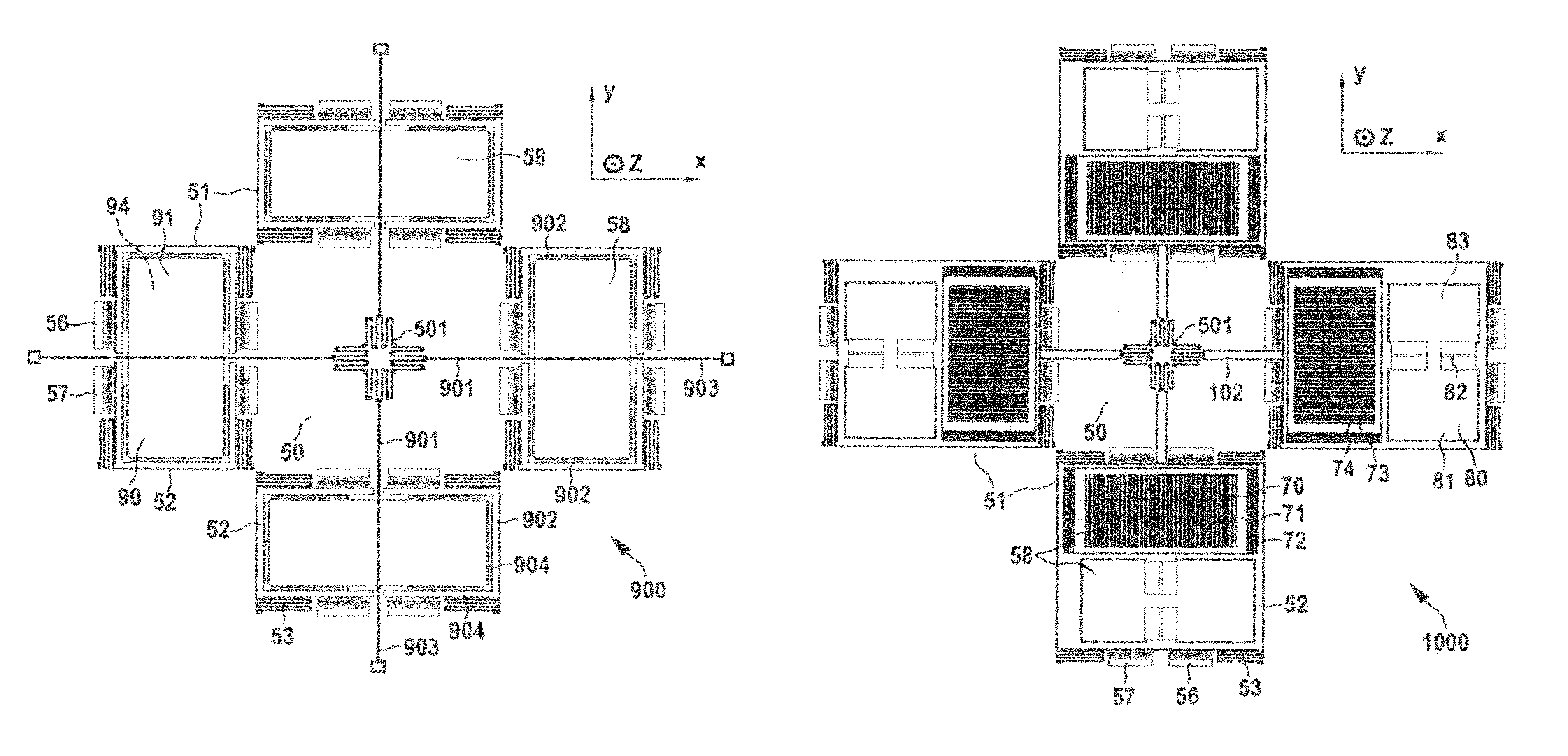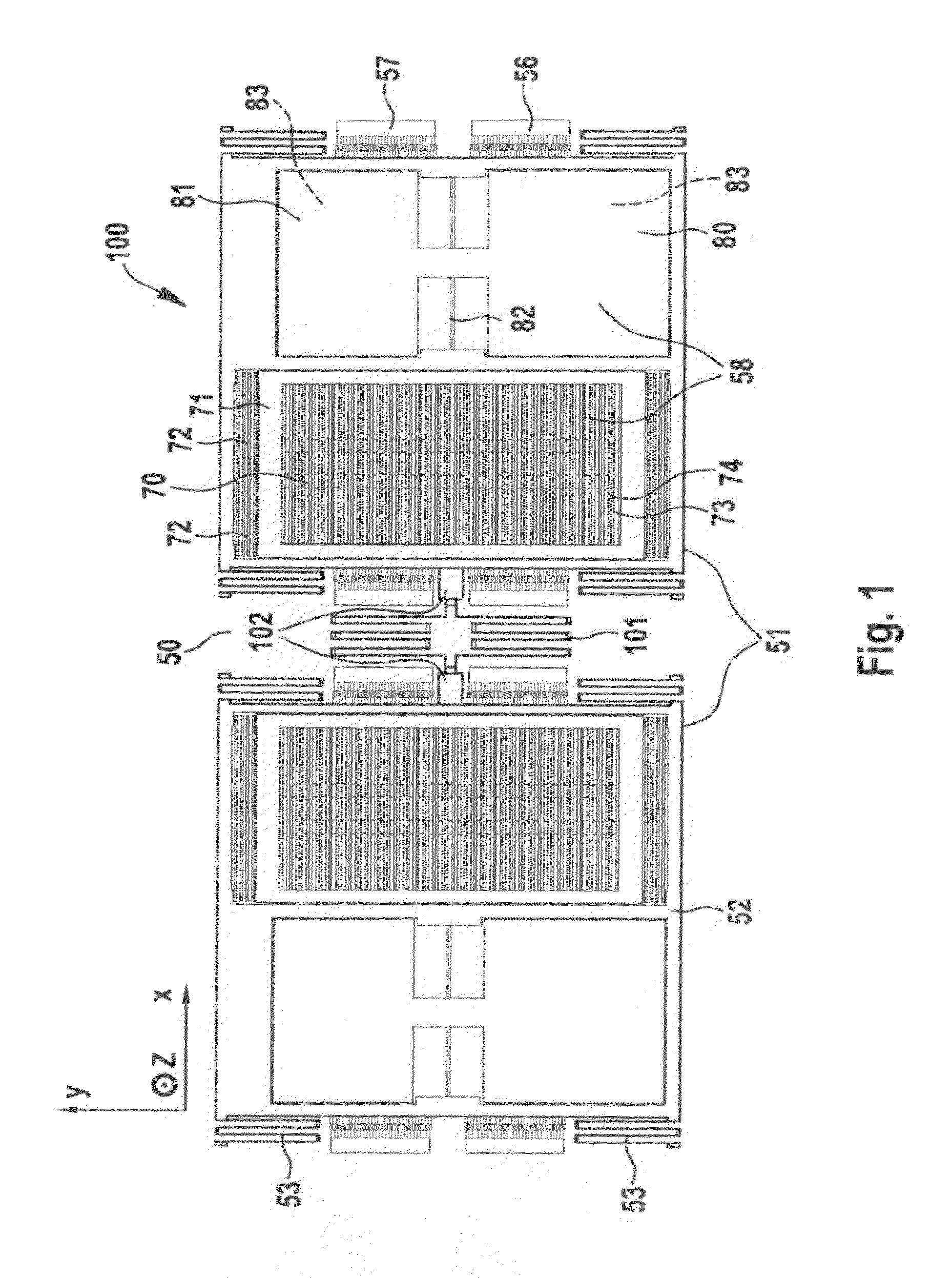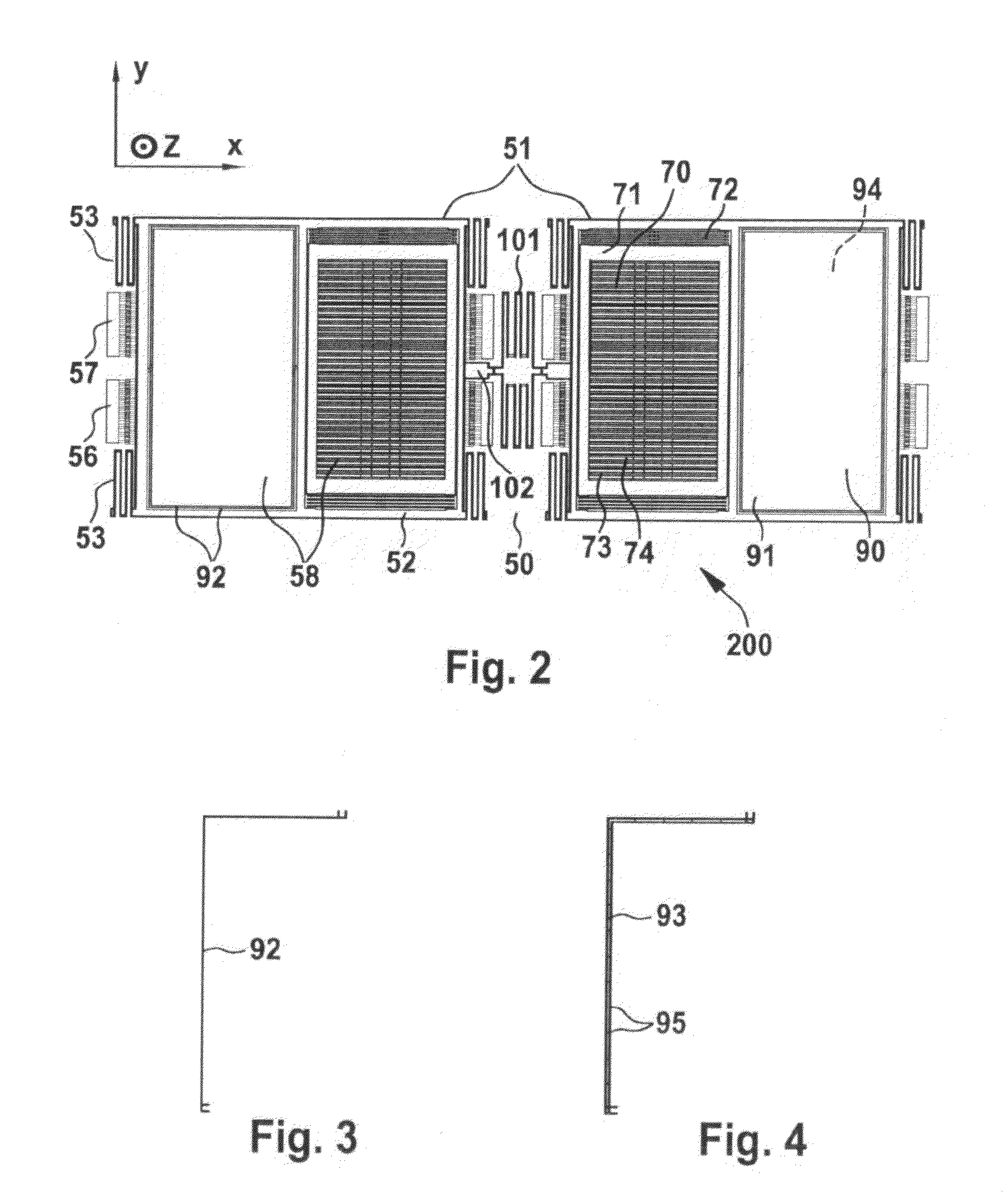Yaw-rate sensor
a sensor and yaw rate technology, applied in the field of yaw rate sensors, can solve the problems of reducing the space and power requirements of the electronic evaluation circuit, and achieve the effects of reducing the susceptibility of interference of the yaw-rate sensor, reducing the space and power requirements of the electronic evaluation circuit, and advantageously manufacturing cost-effectively
- Summary
- Abstract
- Description
- Claims
- Application Information
AI Technical Summary
Benefits of technology
Problems solved by technology
Method used
Image
Examples
Embodiment Construction
[0037]FIG. 1 shows a view of a biaxial yaw-rate sensor 100. Yaw-rate sensor 100 includes two movable substructures 51 which are mounted over a substrate 50 that extends in the plane of the paper. The edge length of yaw-rate sensor 100 is a few hundred micrometers.
[0038]Movable substructures 51 are manufactured out of a material that, at the very bottom, has a thick silicon substrate upon which there is an oxide layer. Above the oxide layer, there is a polysilicon layer VP that forms a circuit trace plane. This is followed by another oxide layer OX, upon which a silicon layer EP is deposited, out of which the movable components of the yaw-rate sensors are manufactured. Recesses are provided at special sites in oxide layer OX. Connections between silicon layer EP and circuit trace plane VP are formed in these recesses during deposition of silicon layer EP. The sensor elements are then defined, and oxide layer OX is removed in an etching process. Self-supporting structures are thereby ...
PUM
 Login to View More
Login to View More Abstract
Description
Claims
Application Information
 Login to View More
Login to View More - R&D
- Intellectual Property
- Life Sciences
- Materials
- Tech Scout
- Unparalleled Data Quality
- Higher Quality Content
- 60% Fewer Hallucinations
Browse by: Latest US Patents, China's latest patents, Technical Efficacy Thesaurus, Application Domain, Technology Topic, Popular Technical Reports.
© 2025 PatSnap. All rights reserved.Legal|Privacy policy|Modern Slavery Act Transparency Statement|Sitemap|About US| Contact US: help@patsnap.com



